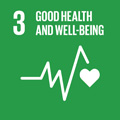- Docente: Stefania Toselli
- Credits: 4
- SSD: BIO/08
- Language: Italian
- Teaching Mode: In-person learning (entirely or partially)
- Campus: Rimini
- Corso: Second cycle degree programme (LM) in Human Nutrition, Well-Being And Health (cod. 5812)
-
from Feb 25, 2026 to Apr 29, 2026
Learning outcomes
By the end of the course, the student will be able to assess human body characteristics using standardized measurement techniques and interpret them in relation to variability influenced by environmental factors, with particular reference to health, lifestyle, sports, and nutritional contexts. Through practical laboratory activities, the student will also develop the ability to collect and manage key anthropometric measurements.
Course contents
· Design of an anthropometric study: definition of the study design, sampling strategies, selection of the variables to be measured, and organization and management of data collection sheets.
· Measurement techniques and instrumentation: methods of measurement, tools used, and analysis of variability in the main anthropometric parameters (standing and sitting height, body weight, transverse diameters, body lengths, circumferences, and skinfold thicknesses).
· Body proportion indices and health risk indicators: definition, evaluation methods, and analysis of individual and environmental variability.
· Body composition: assessment techniques and areas of application, with particular focus on skinfold measurement and bioelectrical impedance analysis. In-depth study of bioelectrical impedance vector analysis (BIVA) and its interpretation in the nutritional context. Discussion of the main factors influencing variability in body composition.
· Heath-Carter somatotype: calculation methods, practical applications, interpretation, and understanding of individual and contextual variability in somatotype classification.
Readings/Bibliography
Norton, Olds:"Anthropometrica" UNSW Press, 2006
Lohman, Roche, Martorell- "Manuale di riferimento per la standardizzazione antropometrica" EDRA ed., 1992
Eston R. Reilly T .”Kinanthropometry and exercise physiology laboratory manual- vol 1: Anthropometry” Routledge ed., 2001
Frisancho A. R. Anthropometric standard. An interactive Nutritional reference of Body Size and Body Composition for children and adults. Ann Arbor - The University of Michigan Press, 2011
S. Toselli, F. Campa. Valutazione antropometrica e della composizione corporea. Per la salute e la performance. ATS Giacomo Catalani Editore [https://www.ibs.it/libri/editori/ats-giacomo-catalani-editore], 2021
E. Marini, S. Toselli (curator) Bioelectrical impedance analysis of body composition. Applications in sports science, UNICApress, 2021
https://unicapress.unica.it/index.php/unicapress/catalog/book/978-88-3312-033-1
The lecture slides will be made available to students on VIRTUALE during the course.
Teaching methods
The course includes lectures and supervised practical exercises.
Assessment methods
The exam aims to assess the achievement of the course's learning objectives, particularly the student's ability to:
-
Understand anthropometric measurement techniques and the significance of the main body measurements;
-
Understand the methodologies for defining body indices, body composition, and somatotype, with particular reference to their application in the nutritional field;
-
Apply the acquired techniques and methodologies to analyze body variability in auxological contexts, during adulthood, aging, and in sports settings.
The assessment consists of an oral exam in which the student will be asked three questions related to the topics covered in lectures and the methodologies learned during practical exercises.
The evaluation will be based on the student's ability to:
-
Present the acquired knowledge using appropriate terminology;
-
Demonstrate an integrated and comprehensive understanding of the topics discussed;
-
Argue critically about the content.
Excellent performance will be recognized for a clear, complete, and critically aware presentation, using appropriate technical language. A satisfactory performance will be given to those demonstrating adequate knowledge, with limited depth, and the ability to connect the topics, using correct but occasionally less precise language. Fragmentary knowledge, significant gaps, and/or inappropriate language will result in a grade that does not exceed the passing mark.
Teaching tools
Projector, computer, scientific articles, anthropometric equipment, and lecture recordings.
Office hours
See the website of Stefania Toselli
SDGs

This teaching activity contributes to the achievement of the Sustainable Development Goals of the UN 2030 Agenda.
